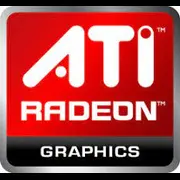ATI Radeon HD 4850 X2

ATI Radeon HD 4850 X2: Vintage Power in the Age of Modern Technology
April 2025
Introduction
The ATI Radeon HD 4850 X2 graphics card is a legend from the late 2000s, a dual-chip monster that challenged NVIDIA's top solutions at the time. As of 2025, this model intrigues retro hardware enthusiasts and collectors. Let's delve into what makes it noteworthy today, how it handles modern tasks, and whether it is worth considering for unconventional scenarios.
Architecture and Key Features
R700 (RV770) Architecture
The HD 4850 X2 is built on two RV770 chips combined using CrossFireX technology. The manufacturing process is 55 nm, which was cutting-edge back in 2008. The card supports DirectX 10.1 and Shader Model 4.1, but it is incompatible with modern APIs such as Vulkan or DirectX 12 Ultimate.
Lack of Modern Technologies
There’s no ray tracing (RTX), DLSS, or FidelityFX; these features emerged a decade later. However, the HD 4850 X2 does implement ATI Avivo HD technology for video decoding, which was a significant advantage during the Blu-ray and HD content era.
Memory: A Nod to the GDDR3 Era
Memory Specifications
Each GPU is equipped with 1 GB of GDDR3 memory on a 256-bit bus. The effective memory clock is 2000 MHz, providing a bandwidth of 64 GB/s per chip. The total memory is 2 GB, but due to the split between the chips, the actual available capacity for applications does not exceed 1 GB.
Impact on Performance
For games from 2008 to 2010 (e.g., Crysis, GTA IV), this was sufficient for comfortable gameplay at 1080p. However, in 2025, even 2 GB of GDDR3 is critically low. Contemporary titles like Cyberpunk 2077 or Starfield demand a minimum of 4–6 GB of VRAM, not to mention the speed of GDDR6/HBM.
Gaming Performance: A Nostalgia for the Past
Retro Gaming
In older games, the HD 4850 X2 still shows respectable results:
- Crysis (2007, Very High): 35–40 FPS at 1080p;
- Left 4 Dead 2 (2009, Ultra): 60+ FPS;
- World of Warcraft: Wrath of the Lich King (2008): 50–60 FPS.
Modern Projects
In 2020s games, the card is nearly useless. Even at low settings in Fortnite (Performance mode) or CS2, FPS rarely exceeds 20-25 frames. Support for resolutions above 1080p (1440p, 4K) is technically possible, but practically results in a slideshow.
Ray Tracing
Hardware ray tracing is not supported. Software solutions like DirectX Raytracing (DXR) are also unavailable due to the lack of API compatibility.
Professional Tasks: Moderate Usability
Video Editing and 3D Modeling
The card supports OpenCL 1.0, but its power is insufficient for rendering in Blender or Adobe Premiere Pro. Simple tasks like editing 1080p video in DaVinci Resolve are possible but come with delays.
Scientific Calculations
CUDA is NVIDIA-exclusive, so for computations, one must rely on outdated versions of OpenCL. In the age of AI and neural networks, the HD 4850 X2 seems archaic—even compared to budget modern GPUs.
Power Consumption and Thermal Output
TDP and PSU Requirements
The card has a TDP of 250W, which is considered high for 2025. A power supply with a minimum wattage of 500W (with headroom) is required for stable operation.
Cooling and Cases
The stock cooling system is turbine-style (blower-style), which is quite loud under load (up to 45 dB). It is recommended to use a case with good ventilation and additional fans for intake/exhaust. In compact builds, overheating may occur.
Comparison with Competitors
Historical Comparisons
Between 2008 and 2009, the HD 4850 X2 competed with the NVIDIA GeForce GTX 260/280. In terms of performance, it outpaced the GTX 260 but lagged behind the GTX 280.
Modern Comparisons
By 2025, even budget cards like the AMD Radeon RX 6400 (4 GB GDDR6, TDP 53W) or Intel Arc A310 (6 GB GDDR6) far exceed the HD 4850 X2 in energy efficiency and support for new technologies.
Practical Advice
Power Supply
A minimum of 500W with an 80+ Bronze rating is recommended. It is essential to have 8-pin PCIe connectors (the card requires 2×6-pin).
Platform Compatibility
- Motherboards: only with PCIe 2.0/3.0 (backward compatibility exists, but there may be limitations on PCIe 4.0/5.0);
- OS: official drivers are only available for Windows 7/8.1. On Windows 10/11, modified drivers or the standard Microsoft Basic Display Adapter will be needed.
Drivers
The last version of Catalyst from AMD was released in 2013. For running old games, emulators like DXVK can be used, but this does not guarantee stability.
Pros and Cons
Pros:
- Legendary status and nostalgic value;
- Moderate performance in retro games;
- Unique dual-chip solution.
Cons:
- High power consumption;
- No support for modern APIs and technologies;
- Limited compatibility with new software.
Final Conclusion: Who is the HD 4850 X2 Suitable for in 2025?
This graphics card is a choice for:
1. Retro gaming enthusiasts building PCs in the style of the 2000s.
2. Collectors who appreciate historical artifacts of the IT industry.
3. Owners of older systems where upgrading to modern hardware is not feasible.
If you’re looking for a GPU for everyday use, gaming, or work—consider budget models from the 2020s. But if you want to revisit the past, the HD 4850 X2 will make a great exhibit in your collection.
Note: New instances of the HD 4850 X2 have not been produced since 2010. On the secondary market, prices range from $30 to $80 depending on condition.
Basic
Memory Specifications
Theoretical Performance
Miscellaneous
Benchmarks
Compared to Other GPU
Share in social media
Or Link To Us
<a href="https://cputronic.com/en/gpu/ati-radeon-hd-4850-x2" target="_blank">ATI Radeon HD 4850 X2</a>